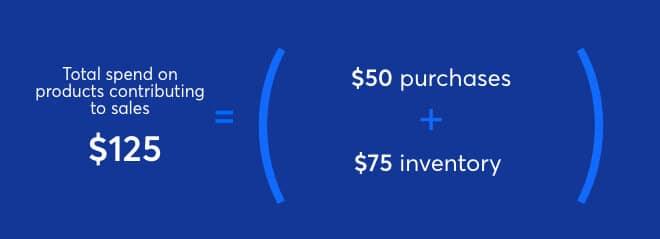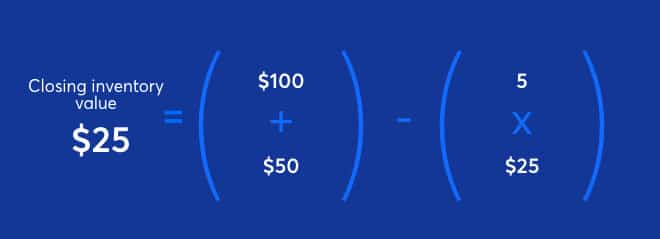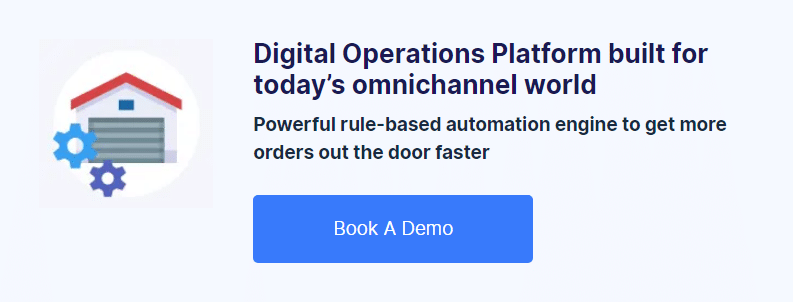Accounting for your inventory is as important as accounting for your sales. Every product you have on the shelf has a cost value, and in order to grow your business effectively, you need to understand how to manage this cost properly.
There are two different ways to do this within retail:
- Periodic Inventory Management
- Perpetual Inventory Management
In this article, you’ll discover the key differences between both of these inventory accounting methods and which is best for your unique retail business.
What Is Periodic Inventory Management?
If you’re only updating your inventory and associated accounts after a specific period of time (i.e. quarterly or annually), then you’ll be using what is known as periodic inventory management.
This is more commonly used by smaller retailers that have minimal quantities of inventory at any one time, however, costs of goods sold accounting has to be done manually. It’s also impossible to adjust for obsolete or scrap losses in between each inventory update, which could result in large accounting adjustments that may not have been foreseen in financial planning decisions.
Understanding Periodic Accounting for Inventory Purchases
Using the periodic method, inventory accounting doesn’t occur when a sale happens. A sale stores the revenue and tax transactions, and shows as 100% profit on your Income Statement. At month (or year) end, an inventory update is run, a value is assigned, and this is then compared to the previous month’s inventory value.
The “Opening inventory value” and “Closing inventory value” are logged in your accounts, which, factoring any purchases you may have made during the period, gives you a cost of sale. This is subtracted from your revenue to give you your gross profit.
Let’s look at an example of this in action:
Inventory at start of month: $100
Purchases made during month: $50
Inventory at end of month: $25
Even though you’ve bought $50 of inventory, at the end of the month you are $75 down on the previous month (opening balance $100 – closing balance $25). This means the total spend on products contributing to sales in the month is:
$125 ($50 purchases + $75 inventory shipped)
$75 inventory shipped = opening balance $100 – closing balance $25
Total spend on products contributing to sales: $125 = $50 purchases + $75 inventory shipped

With periodic accounting, the purchase value is added directly to the Profit and Loss (P&L) report or Income Statement when you buy the inventory, and the inventory adjustment is added at the end of the month. You can only get an accurate profit report once a month, after all of the calculations are made.
An inventory valuation should follow a full cycle count (i.e. stocktake) to take into account any gift sales, free samples, damage, or theft. Any loss of inventory due to damage or theft won’t be discovered until the count is done, and by that time, it won’t be easy to determine where and when it happened.
However, because you don’t have to account for the cost of inventory for each and every sale, the periodic accounting method is simpler and easier to work with if you’re running separate software systems for accounting and inventory management.
What Is Perpetual Inventory Management?
Your other option is perpetual inventory management, which is when inventory updates and their associated accounting transactions are made continually.
With every sale, purchase and manual inventory change, your inventory reports are updated in real time (including those all important accounting transactions related to inventory updates). This method significantly speeds up the inventory process, saving valuable time and money.
Real-Time Accounting for Inventory and Profit
With the perpetual inventory accounting method, an entry is made on your Income Statement or Profit and Loss report for every single sale that contains inventory. Your asset value on the Balance Sheet is decreased, and your Cost of Sale on the P&L is increased, based on the actual value of the items that have been shipped. When you buy more inventory, the purchase value is added into your assets (found on the Balance Sheet), not into the P&L, as it would be with periodic inventory accounting.
Let’s see an example of this in action:
- Opening inventory value: $100
- Purchases made: $50 (no change to P&L)
- Sale #1: $40
- Cost of Sale #1: $25
- Gross profit for the sale made: $40 – $25 = $15.
If we continue to make 5 similar sales in the month, we have a sales revenue of $200 and a cost of sale of $125, giving the same gross profit as the periodic accounting method, but without the need for inventory valuation.
Sales revenue: $200 = $40 * 5
Total cost of sale: $125 = $25 * 5
Gross profit: $75 = $15 * 5

We can also see the profitability in real time.
But what about the closing inventory value?
In this example, we open with $100, add $50 directly into the assets with the purchase order, and then subtract $25 for each of the 5 sales made, leaving $25 at the end of the period.
In this example, we open with $100, add $50 directly into the assets with the purchase order, and then subtract $25 for each of the 5 sales made, leaving $25 at the end of the period.
Inventory at start of month: $100
Inventory purchased: $50
Inventory sold: $125
Cost of Sale #1: $25

When you receive goods into the warehouse, it’s essential that you enter the most accurate cost value available. Your software should account for any slight discrepancies if the actual value is given on the purchase invoice.
Receiving inventory later is different. To benefit from perpetual inventory accounting, purchasing, inventory and accounting processes need to be tightly integrated, and ideally all operate within the same software platform. Through a single configuration, accurate data can be accessed in real time, since transactions are automated and opportunities for error are reduced.
Choosing Between Periodic and Perpetual Inventory Accounting
When evaluating the right method for your business, consider the following:
- Periodic inventory is better suited for small businesses with limited stock and basic accounting needs.
- Perpetual inventory provides better scalability and control, especially when software systems for purchasing, stock, and accounting are integrated.
If you want accurate and timely inventory profit and loss reporting, perpetual inventory accounting is the more robust solution.
Final Thoughts on Accounting for Inventory
Both inventory methods impact how you track profits, manage losses, and report financials. By understanding the differences and reviewing accounting for inventory examples like the ones provided above, you can select a system that matches your growth goals and operational complexity.
Whether you’re improving how you handle accounting for inventory purchases or aiming for real-time visibility into your business health, your choice of inventory system plays a critical role.
Frequently asked questions
- What is accounting for inventory and why is it important?
– Involves tracking the value of goods a business holds for sale. It’s crucial because it affects financial statements, tax obligations, and profit analysis. - What are the main methods of accounting for inventory?
– The two main methods are periodic inventory accounting and perpetual inventory accounting. Each has different implications for how inventory purchases and costs are recorded. - How does accounting for inventory purchases work?
– In periodic systems, inventory purchases are recorded as expenses. In perpetual systems, purchases are added to inventory assets and only expensed when sold. - How does inventory accounting affect my financial statements?
– Inventory levels directly influence your Income Statement (via COGS) and your Balance Sheet (as an asset). Accurate inventory accounting ensures truthful financial reporting and compliance. - When should a business use periodic vs. perpetual inventory accounting?
– Smaller businesses with simple inventory needs may benefit from periodic systems, while larger or fast-growing businesses typically prefer the accuracy of perpetual systems.

